Organizing Your Content: Building Topic Clusters for Comprehensive SEO Outreach
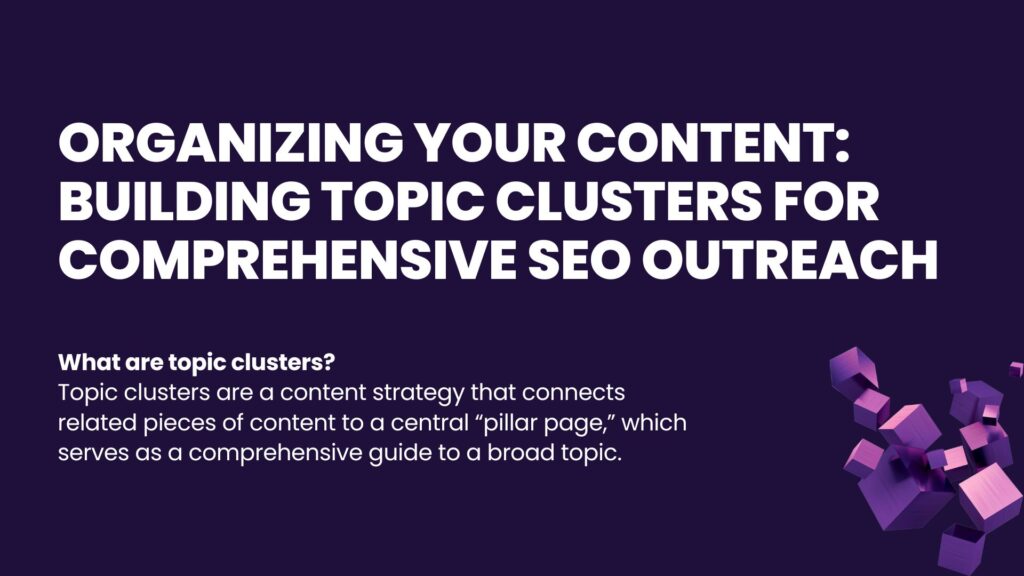
When it comes to creating content that ranks well on search engines, organization is key. Search engines like Google aim to provide users with the most relevant and comprehensive results. To achieve this, they prioritize websites that present information in a structured and connected way. This is where topic clusters come in.
Topic clusters are a strategic way to organize your website’s content. By grouping related topics together and linking them to a central hub, you can improve your SEO performance, increase user engagement, and establish your authority in your niche.
In this post, we’ll explain what topic clusters are, why they matter for SEO outreach, and how to create them effectively.
In this article:
- What Are Topic Clusters?
- Why Topic Clusters Matter for SEO Outreach
- How to Build Topic Clusters for SEO Outreach
What Are Topic Clusters?
A topic cluster is a content strategy that connects related pieces of content to a central “pillar page.” The pillar page serves as a comprehensive guide to a broad topic, while the cluster content dives deeper into subtopics and links back to the pillar page.
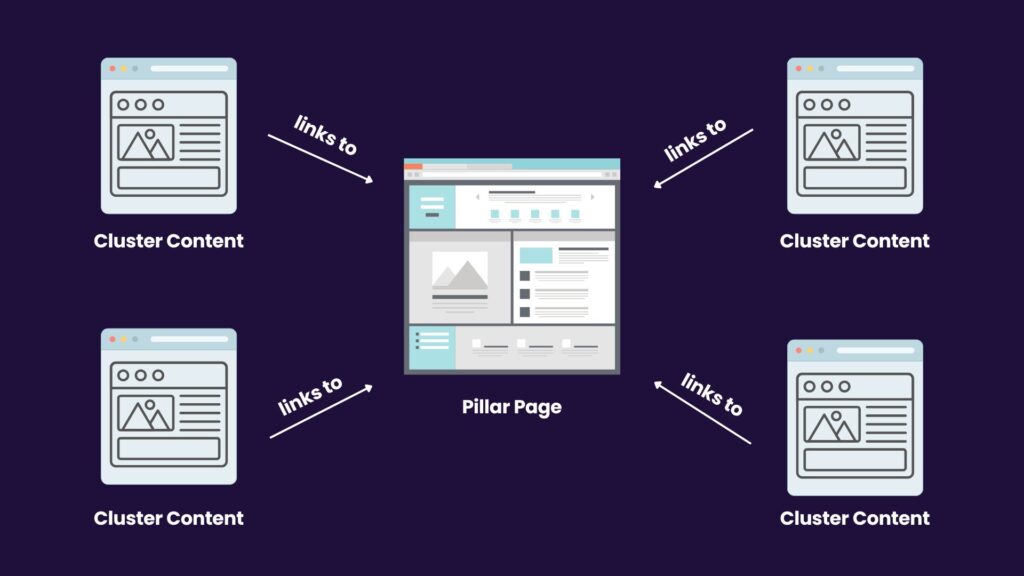
How It Works:
- Pillar Page: This is the main page that covers a broad topic in detail. For example, a pillar page could be “The Ultimate Guide to Digital Marketing.”
- Cluster Content: These are individual blog posts or articles that focus on specific subtopics related to the pillar page. For example:
- “SEO Strategies for Beginners.”
- “How to Use Social Media for Marketing.”
- “Email Marketing Best Practices.”
- Internal Links: The cluster content links back to the pillar page, and the pillar page links to the cluster content. This creates a web of connected content.
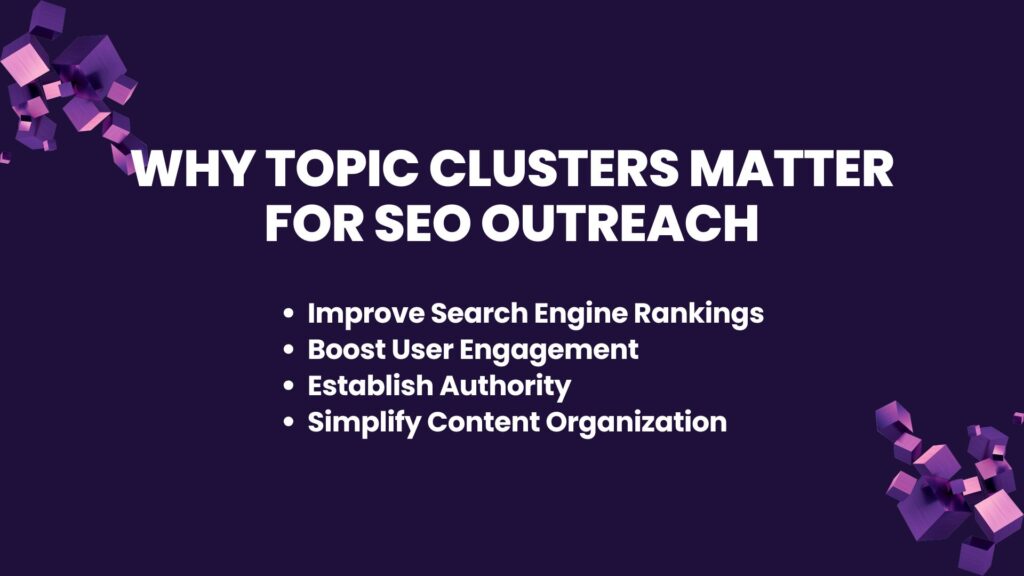
Why Topic Clusters Matter for SEO Outreach
Topic clusters are essential for building a strong SEO strategy. Here’s why they work:
1. Improve Search Engine Rankings
Search engines favor organized, interconnected content because it’s easier to crawl and index. Topic clusters signal to search engines that your website covers a subject comprehensively, increasing your chances of ranking higher.
2. Boost User Engagement
When users visit your website and find a clear structure with relevant, related content, they’re more likely to stay longer and explore further. This reduces bounce rates and increases time on page—two factors that help improve your SEO performance.
3. Establish Authority
By covering a topic in-depth and connecting all related content, you position yourself as an authority site in your niche. This not only attracts more visitors but also encourages other websites to link to your content.
4. Simplify Content Organization
Topic clusters make it easier to plan, create, and maintain your content. Instead of creating random blog posts, you can focus on building a cohesive structure that aligns with your audience’s needs.
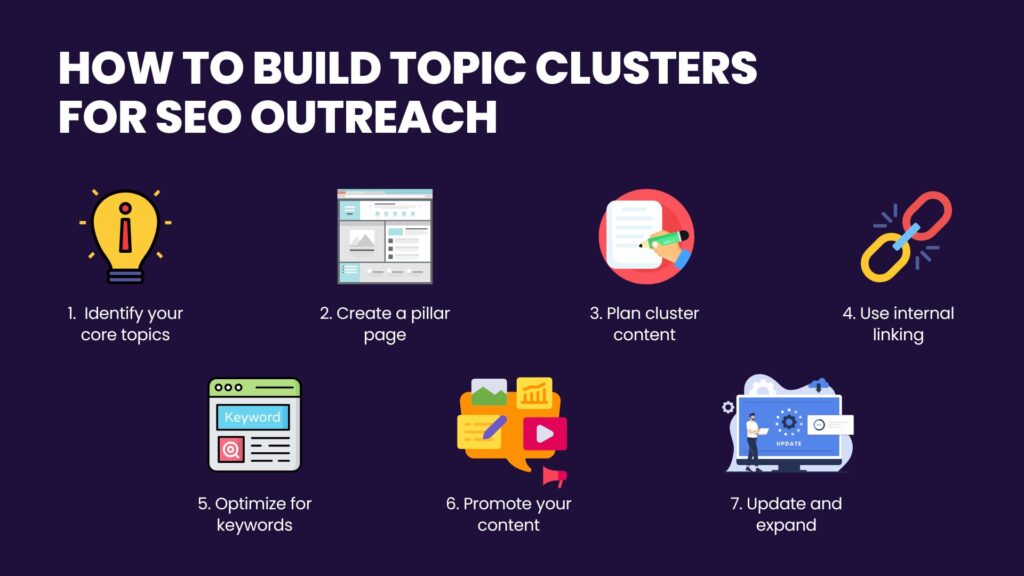
How to Build Topic Clusters for SEO Outreach
Follow these steps to create effective topic clusters for your website:
1. Identify Your Core Topics
Start by selecting the main topics you want to focus on. These should align with your business goals and target audience.
- Use keyword research tools like Google Keyword Planner or Ahrefs to find popular topics in your niche.
- Choose topics broad enough to support multiple subtopics.
Example: If you run a fitness blog, one of your core topics could be “Healthy Living.”
2. Create a Pillar Page
The pillar page is the foundation of your topic cluster. It should provide an in-depth overview of the main topic and include links to related subtopics.
Cover the topic comprehensively but avoid going into too much detail on subtopics (save that for cluster content). Use headings (including meta titles), bullet points, and visuals to make the content easy to read. Include a strong call-to-action (CTA) to guide users to take the next step.
Example:
Pillar page title: “The Ultimate Guide to Healthy Living.”
Subtopics: Nutrition, exercise, mental health, and sleep.
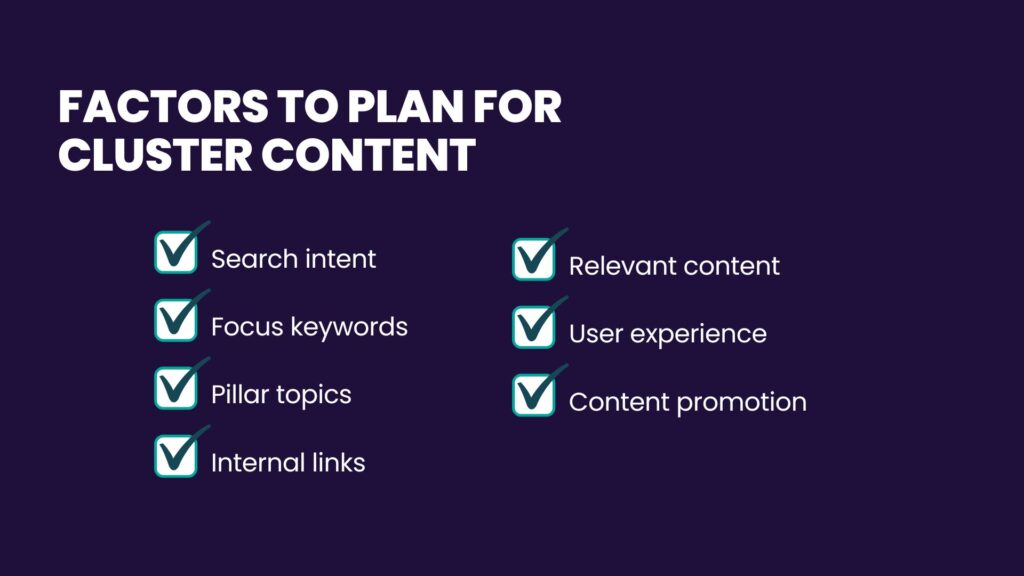
3. Plan Cluster Content
Next, brainstorm subtopics that expand on the main topic. These should be specific, actionable, and valuable to your audience.
Example Subtopics for “Healthy Living”:
- “10 Simple Meal Prep Ideas for Busy People.”
- “Best Home Workouts for Beginners.”
- “How to Improve Sleep Quality Naturally.”
4. Use Internal Linking
Link each cluster content piece back to the pillar page, and vice versa. This creates a web of interconnected content that helps both users and search engines navigate your site.
Use descriptive anchor text that includes relevant keywords. Avoid overloading pages with too many links. Check regularly for broken links and fix them.
5. Optimize for Keywords
Incorporate keywords naturally into your pillar page and cluster content. Focus on primary keywords for the pillar page and long-tail keywords for cluster content.
Example:
- Pillar page keyword: “Healthy Living Guide.”
- Cluster content keyword: “Easy Meal Prep Tips for Healthy Eating.”
6. Promote Your Content
Once your topic cluster is complete, promote it through outreach campaigns, social media, and email newsletters. This drives traffic to your site and increases the likelihood of earning backlinks.
7. Update and Expand Regularly
SEO is an ongoing process. Keep your content fresh by updating existing pages and adding new cluster content as needed. Monitor your analytics to see which pages perform well and focus on expanding those areas.
Organize and Enhance Your Outreach
Topic clusters are a powerful way to organize your content, improve your SEO performance, and enhance your outreach campaigns. Start small with one core topic, build a cluster around it, and expand as you go. With consistent effort, you’ll create a content structure that drives traffic, engagement, and results.
Secure high-quality backlinks that strengthen your pillar pages and cluster content with Link Genius. Our automated campaigns can make building authority and driving traffic easier. Book a demo today!
